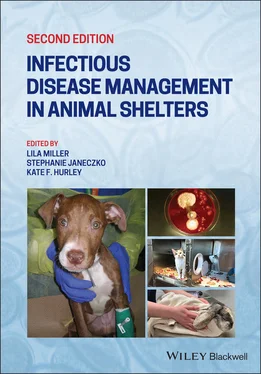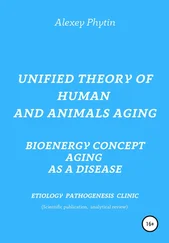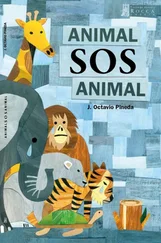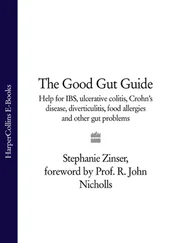1.3.1 Right‐Sizing the Population
The ASV Guidelines for Standards of Care caution that “Every sheltering organization has a maximum capacity for care, and the population in their care must not exceed that level” (Newbury et al. 2010). The “right‐size” for the shelter population at any one time can be defined as that which maximizes the number of animals served while not exceeding the organization's capacity to provide humane care. Limits on capacity include the number of adequately sized housing units, staffing level, and availability of specialized medical and behavioral care where needed.
Some of these numbers are relatively straightforward to determine. For example, in order to generate an estimated maximum population that can be accommodated, housing units can simply be counted, while total staff time available for daily animal care can be divided by the amount of time required for care on a per animal basis. The National Animal Care and Control Association (NACA) and Humane Society of the United States suggests a minimum of 15 minutes per animal per day for cleaning and feeding as a general guideline (NACA 2009). However, as expectations for care increase and shelter admissions shift toward animals requiring more medical and behavioral care, the time required per animal is better calculated based on direct observation and documentation of average care needs.
Even when housing numbers and staff time are ample, it may still be advantageous to maintain the population below the maximum that can be physically accommodated (Swanson 2015). Rather, the ideal size of the population is driven by the average daily expected throughput (intake or outcome) of animals multiplied by the target LOS to the best possible outcome. The “average daily throughput” should generally be based on monthly intake and outcome estimates based on past performance and, ideally, should be calculated separately by species and age of animals (juvenile versus adult).
Though calculations should ultimately be made separately for holding areas and other common pathways such as animals awaiting transfer to partner agencies, the ideal number of animals available for adoption provides a straightforward illustration and can be a good place to start. This number has sometimes been described as “Adoption Driven Capacity.” For instance, if a shelter expects to perform 60 adult cat adoptions in one month, based on historical trends and aims to keep the LOS for cats at no more than 15 days, the calculation for the ideal number of cats awaiting adoption is as follows:
Sixty cats adopted per month/30 days in a month = ~two cats adopted on average each day. Two cats adopted each day × 15 days target LOS per cat to adoption = 30 cats on average that should be available for adoption at any given time.
Doubling the number of cats available from 30 to 60 would mean that cats stay twice as long on average unless the increased population somehow bring in twice the number of adopters. Conversely, reducing the number of cats awaiting adoption from 30 to 20 (for instance via a one‐time adoption promotion event) would lower the average LOS from 15 days to 10 (20 cats available for adoption/two adoptions on average per day). The benefits this population decrease could have, in terms of staff time and resource allocation, as well as the direct health effects of reduced population density and shorter LOS, will be apparent to the reader.
This example is provided only as a brief illustration. Detailed instructions on “right‐sizing” shelter populations are beyond the scope of this chapter but can be found elsewhere, often under the heading “Capacity for Care” (CFHS 2018; Karsten et al. 2017). Suffice to say that performing these calculations and developing strategies to right‐size the shelter population and maintain it at that level are a vital component of a successful shelter health and infectious disease control program.
1.3.2 Length of Stay (LOS)
Reducing the LOS in shelters is an end in itself, provided that it does not come at the expense of successful life‐saving outcomes. From a welfare perspective, even the best shelter housing does not replicate the experience of being in a home. Meeting an animal's behavioral needs becomes more challenging the longer they remain in confinement. Studies have also documented an increased risk of shelter‐acquired disease as LOS increases (Dinnage et al. 2009; Edinboro et al. 2004). Behavioral deterioration and illness in turn can lead to yet longer stays, triggering a negative cycle that can be difficult to reverse. To avoid this, pro‐active plans and consistent checkpoints should be in place, and LOS should be reported and evaluated on a regular basis as a vital indicator of shelter animal and system health.
1.3.2.1 Pathway Planning and Daily Rounds
In addition to right‐sizing the population as described above, methods to reduce the LOS include active “pathway planning” toward the best possible outcome for each animal from the moment of admission (or even more ideally, before the animal is admitted), and performing daily population rounds to keep each animal on track. The daily rounds team should include staff members able to assess and resolve clerical‐/client‐service issues (such as administrative paperwork and client‐contact concerns) as well as animal care, medical and behavioral issues. The daily assessment should include an evaluation of the following:
Paperwork/computer record (including any signage on the animal's housing unit)
Animal location within the facility and with regard to availability status (e.g. moving animals to adoption at the end of required holding periods)
Animal health and demeanor, taking steps as needed to address medical and behavioral concerns, reduce stress and improve comfort (e.g. moving a stressed dog to a quieter ward)
Actions required to move the animal toward the best possible outcome, such as scheduling surgery, contacting rescue, promoting adoption, etc.
The daily rounds team is not expected to both identify and accomplish all needed actions. Rather, daily rounds are a time to capture and assign tasks to the appropriate staff members. While it may seem daunting at first, rounds will more than repay the time it requires to complete them by identifying and removing bottlenecks to animal flow, resolving issues before they cause delays, and noticing and addressing animals' needs to prevent, or at least mitigate, health and behavioral risks. Ultimately, daily rounds save substantial staff time and reduce costs overall.
1.3.2.2 Fast Track Management and Open Selection
A common concern around reducing LOS is that animals will not have time to find their perfect match, especially those with more extensive needs or that are simply a little less likely to appeal to the average adopter. It's important to remember that arbitrary time limits are not a method to reduce the LOS, nor is rushing to euthanasia ever a solution unless an animal is irremediably suffering. Fortunately, such measures are not needed: programs to reduce LOS are designed to benefit all animals passing through the shelter, regardless of their perceived adoptability.
One way to ensure sufficient resources for those animals that require more of an investment is to capitalize fully on the potential of some animals to move through the shelter system very quickly. Fast Track management and Open Selection are two well‐described methods to accomplish this. The purpose of introducing them here is to familiarize the reader with the concepts and terminology should they wish to pursue more information, which is widely available in publications and web‐based sheltering resources.
1.3.2.2.1 Fast Track Management
Читать дальше












